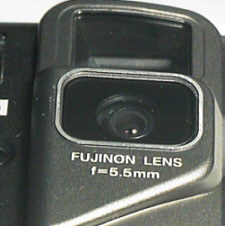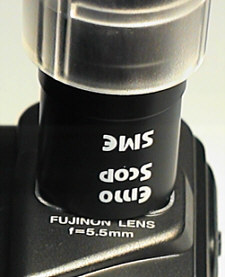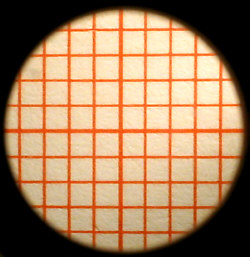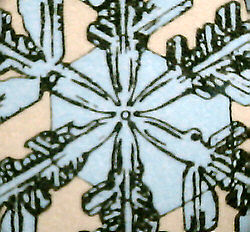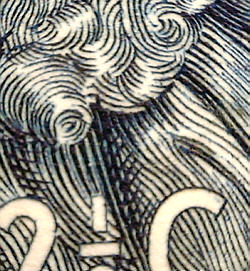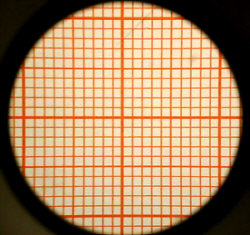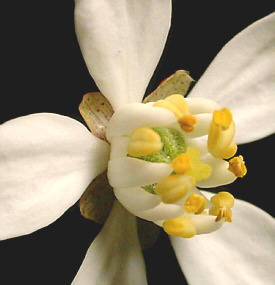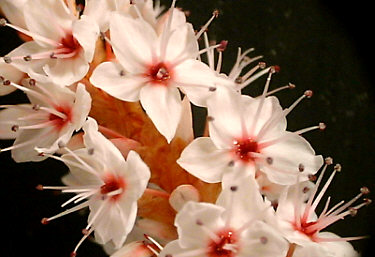|
by Dave Walker, UK |
Many consumer digital camera users are finding that by adding simple temporary attachments to the camera lens, the close-up capabilities can be extended. Paul James and David Young, for example, have taken excellent images with a supplementary lens attached to an Olympus C-830L and Olympus D-860L respectively.
My own digital camera is one of the earlier models, a Fuji DX-10 (800k pixels) with fixed focus lens. It has quite a respectable 'macro' performance at a fixed distance of 10 cm. But the camera's design doesn't readily accept lens attachments which are more suited to digicams with regular lens mounts. However, my brother had recently purchased an Emoscop which is a well known multifunctional hand lens, telescope and field microscope. The Emoscop was of a similar size to the DX-10's lens fascia, so I tried to see if it could extend the macro capabilities of the DX-10. With the DX-10 set on its macro setting, the images projected by the Emoscop in the configurations tried (and possibly others) were in focus despite the fact that the DX-10 is a fixed focus and single focal length digicam.
I share some of the results below in case of interest as there are other budget digicams currently available with simple lens fronts which may also be adapted without damaging the camera. Please note that this is not a review of the Emoscop, as it was designed for visual use and not to project images into a digital camera, so the captured images don't necessarily reflect the Emoscop's visual performance.
A note on the Emoscop: It is designed by Wetzlar Emo, Germany but currently made in China. Information on the designer is here. The SME version has seven different configurations to give a telescope (3X), telescope magnifier (3.5x), hand lens (5x, 10x, 15x) and microscope (30x, 35x). The higher magnifications use a supplied plastic stand to hold the unit steady and at the correct working distance. It has ca. 5 multicoated lenses in singlets/cemented doublets. Full details of the Emoscop are at www.emoscop.com 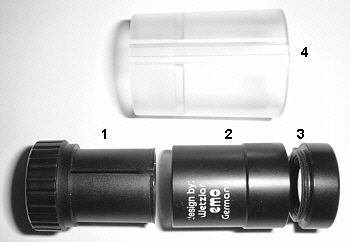
Parts of the Emoscop. When assembled its size without plastic spacer is ca. 56 x 20mm. Item 2 is the 5x loupe; 2+3 is the 15x loupe which is used with the plastic spacer 4.
The first three images below were taken with the 15x Emoscop set-up shown right. The plastic support allows the DX-10 with Emoscop to be firmly handheld and pressed onto flat subject surfaces e.g. papers. All images below were taken handheld with a 75W enlarger lamp and DX-10 on tungsten lamp setting. The lightweight Emoscop can be held firmly in place and aligned on the camera with a ring of e.g. Plasticine (not shown) which comes off cleanly and won't harm the camera.
1 mm graph paper. Field of view ca. 10 mm. Sharpness to the edges of the projected image is good with little noticeable distortion. The DX-10's intrinsic field of view in macro mode is ca. 80 mm. Vignetting is quite extensive but a ca. 410x410 pixel image can be cropped out which is fine for most web work as illustrated below.
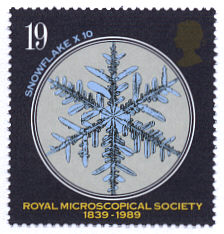
Stamp image above taken on a flatbed scanner. Snowflake detail from the stamp using DX-10 / Emoscop is shown right.
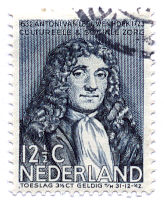
Stamp image above taken on a flatbed scanner. Engraving detail using DX-10 / Emoscop is shown right.
A land shell 7.5 mm long. Small subjects with some depth will sit inside the plastic support ring and will be closer than the Emoscop's working distance. To get round this I put two stacked microscope slides either side of the shell to achieve the correct focus distance. This set-up still allowed a steady handheld image to be taken as the plastic ring is pressed firmly against the slides. The following three images were taken using the 5x setting of the Emoscop. This is the middle section of the Emoscop assembly shown above without the plastic spacer. So images were taken with the DX-10 on a tripod. As an aside, for visual use, the 5x Emoscop gives the finest image the author has ever seen with a hand lens, very contrasty and crisp to the edges. It easily outperforms the author's current hand lens which is an expensive achromatic triplet. 1 mm graph paper. Field of view ca. 24 mm. Good sharpness across the field albeit some pin cushion distortion. But for many smaller subjects placed centrally this is probably acceptable. Garden flower detail. Cropped field shown ca. 15 mm. Black paper background. Tungsten 75W enlarger lamp as for all the other images. Garden flower detail. Cropped field shown ca. 15 mm. Conclusion: For the DX-10 digicam at least, some configurations with the Emoscop attached give quite acceptable images for web work beyond which the DX-10 alone can achieve. The Emoscop is a useful item in its own right, so this additional role for the author's camera is a bonus. If you have a digicam with modest macro facilities and lenses from various sources lying around, try them and see if they can extend the camera's capabilities. They may not work but you can have fun trying!
Comments to the author Dave Walker welcomed.
Footnote: My brother, who had an Olympus C-830L digicam, found that the 5x Emoscop sat snugly over the lens and friction fitted in the space between the two sides of the camera cover without harming the camera and it gave excellent projected images.
Related Micscape articles: Maurice Smith has shown that an 8x hand lens can neatly extend the image capture capabilities of a video camera. Read his illustrated articles 'Eight times everything' and 'Eight times more'.
